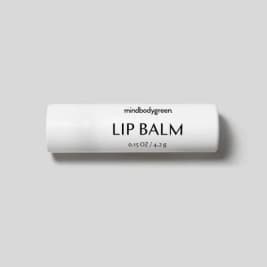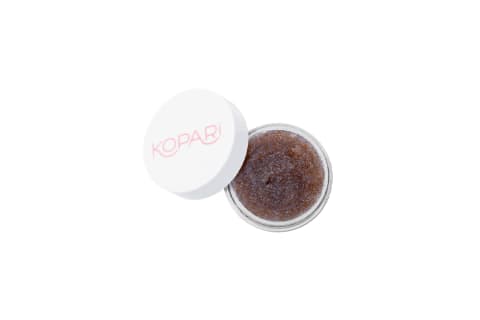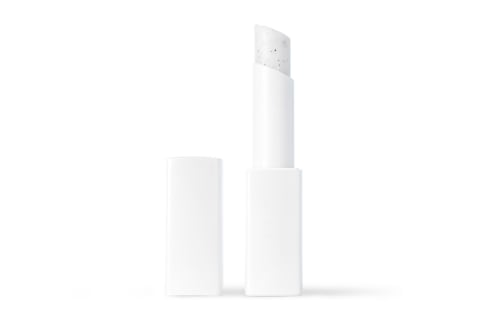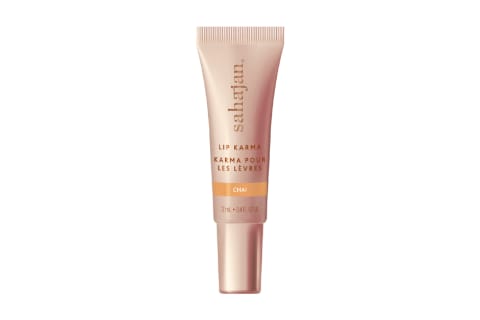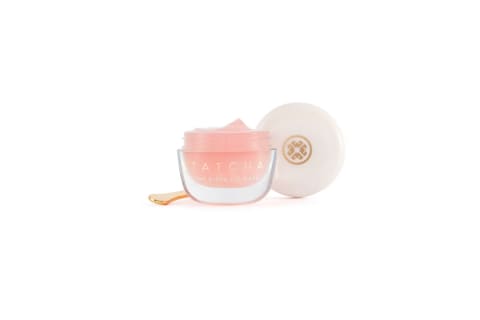An Easy Lip Care Routine For Your Softest Pout Ever, Backed By Derms

Compared to the rest of your face, the lips make up a tiny area of real estate—so they often don't receive the most diligent care. Now, I applaud any hydration you can send to parched lips (even a mere swipe of lip balm is considered a win in my book), but if you want to achieve your softest pout yet? You'll want to employ a more robust regimen.
Don't worry—it doesn't require too much extra maintenance. Here, find derm-backed strategies for the ultimate lip care routine. Make it a weekly commitment, and you'll be sure to notice a difference in the health of your pout.
Why should you have a lip care routine?
I'll counter this question with one of my own: If you treat the skin on your face with painstaking care, why not do the same for the skin on your lips? Your lip skin is, well, skin, and delicate skin at that—in fact, it's one of the thinnest areas on your face (apart from the fragile eye area).
"The mucosal part of your lip is thinner compared to the rest of your skin, as it is made up of fewer layers and also contains many capillaries or tiny blood vessels," board-certified dermatologist Marisa Garshick, M.D., FAAD, tells mbg about aging lips. Because the lips are so thin and sensitive, it's one of the first areas to reveal dehydration and signs of aging (cracks, loss of volume, duller pigment, etc.).
And just like the rest of your skin, it may take a couple of approaches to really secure soft, supple lips. For many, applying lip balm (hydrating as the formula may be) and calling it a day is not enough—to achieve a velvety, pillowy pout, it's important to focus on every angle of lip care.
Ahead, find a step-by-step guide:
Exfoliate.
Not only can exfoliation help buff away flakes and alleviate a chapped pout, but it can also help soften cracks, so your subsequent lip color glides on much easier (because no one likes a gritty, creasing lipstick). Plus: "Exfoliating your lips can be helpful if you're starting to see some lip lines," board-certified dermatologist Loretta Ciraldo, M.D., FAAD, founder of Dr. Loretta Skincare, tells mbg about lip exfoliation. Exfoliation can also give an immediate plumping effect since it stimulates circulation and blood flow, thus helping the pout appear full.
Just like other exfoliating techniques, you have two options: You can opt for a chemical treatment (i.e., a lip balm or peel infused with salicylic acid) or a physical lip scrub to manually buff away flakes. Personally, I prefer the latter since it's often gentler (you can control the pressure), and as I mentioned, it delivers immediate results. Not to mention, it's incredibly easy to DIY your own lip scrub—but if you'd rather snag a market option, feel free to browse the recommendations below.
Regular exfoliation is an integral part of a lip care routine, but you definitely don't want to be scrubbing on the daily. Just like exfoliating your face, it is possible to overdo it. "Over-exfoliating your lips can lead to redness, swelling, sensitivity, or bleeding," says Ciraldo. Not fun. She recommends starting with a once-a-week regimen, then working your way up to two or perhaps three sessions.
Treat.
Here, you'll fold in your more intense actives (think of it like the serum step in a skin care routine). For everyday lip care, you might not need a separate treatment step, but if there are specific concerns you're dealing with—say, lack of volume, dullness, or fine lines—certain lip serums can help whatever you're trying to address.
These lighter formulas often come pumped with actives (hyaluronic acid, peptides, and antioxidants, to name a few) to treat various lip concerns, and given their thinner consistency, you'll want to apply them underneath an oily or waxy lip balm. Now, do you absolutely need a hydrating lip serum to layer underneath an equally hydrating lip balm? No, not really. But if you're looking to double down on moisture and pamper the delicate skin with some TLC, it's worth spending the extra time.
Hydrate.
Hydration is arguably the most important part of the routine. You wouldn't skip moisturizer after exfoliating your face, would you? That's a recipe for a weakened skin barrier.
You're likely familiar with swiping on a lip balm (you may even have a go-to tube in every tote you own), but make sure you have a product that actually sends moisture to the lips. Read: Occlusive-only wax or jelly balms will merely coat the surface, and shiny, plumping numbers are great for aesthetic purposes but might not be the most moisturizing.
Other lip balms might contain hydrating ingredients, but they don't have any occlusives to trap that hydration inside—which will only dry out the lips even further. "Lip balms that contain only humectant ingredients, such as hyaluronic acid and glycerin, can actually make lips more dry because they attract moisture, and if the air is very low in humidity, then they can pull moisture out of the skin, and then the moisture evaporates away," board-certified dermatologist Hadley King, M.D., told mbg about healing lip cracks.
Rather, opt for formulas that include a blend of humectants, emollients, and occlusives. mindbodygreen's lip balm, for example, features shea butter to soften the surface, hyaluronic acid to draw in hydration, antioxidant-rich oils (like moringa and sunflower seed) to protect the delicate skin, and vitamin E and vegan waxes to lock in moisture.
Mask.
Let's imagine your evening skin care routine: Do you apply a thicker face cream or slip on a face oil before bed? The skin is more permeable at night1, so it's best to seal in tons of moisture before you hit the hay. Well, the same logic applies to your lips: To hydrate your pout all night long, you might want to opt for a lip mask. Thicker in consistency, these occlusive-heavy formulas melt onto lips and keep them coated in moisture while you snooze.
You can find a list of clean lip masks here, but for the ease of browsing, I've included a couple of personal favorites below. I frequently wear these hydrating numbers to bed (layered over mbg's lip balm for even more moisture), and they do not dare budge. I consistently wake up with a jelly sheen over my pout, which means the formula keeps my lips protected all night long.
Protect.
While lip masks help protect your pout from water loss at night, an SPF lip balm is key during daytime hours. "Protecting your lips from the sun is just as important as protecting your face," says aesthetic nurse practitioner Shawna Jones, PA-C, about how to keep your lips plump and supple. See, sun exposure contributes to collagen decline, which can accelerate lip thinning and discoloration over time.
Plus, those UV rays can dehydrate that delicate skin: "The sun can dry out the lips and compromise the lips' ability to hold water and hydration," Michelle Henry, M.D., founder of Skin & Aesthetics Surgery of Manhattan, previously shared with mbg. Good news: Many SPF lip balms come laced with moisturizing actives to hydrate and smooth the lips, too.
Of course, it's important to protect the lips from other environmental aggressors, too. "Cover your mouth when outside in the elements," says King. "Cold air and wind will be particularly drying for the lips, so it is helpful to cover them with a scarf to protect them."
The takeaway.
And there you have it: An easy lip care routine that will leave your pout plump, supple, and prepped for bold color. Just know that if your lips won't stay moisturized no matter how many hydrating steps you layer in your routine, you might be dealing with a sneakier culprit—but many causes for dry lips are easy to fix.

Jamie Schneider is the Beauty Editor at mindbodygreen. She has a B.A. in Organizational Studies and English from the University of Michigan, and her work has appeared in Coveteur, The Chill Times, and more. In her role at mbg, she reports on everything from the top beauty industry trends, to the gut-skin connection and the microbiome, to the latest expert makeup hacks. She currently lives in Brooklyn, New York.
